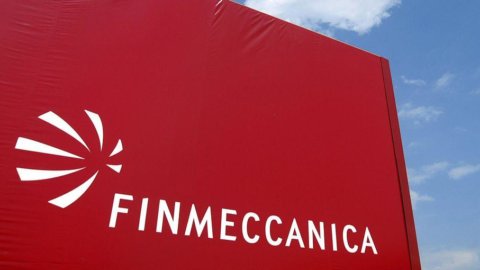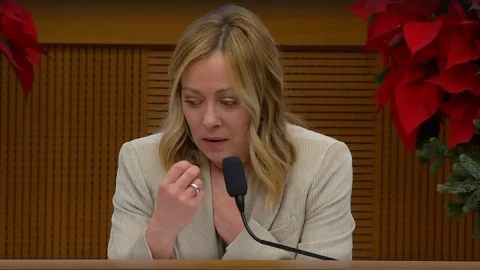They hadn't remembered a day like yesterday at Finmeccanica for a long time. In just one session, the stock gained 8,2% on the stock market and was the absolute king of Piazza Affari. Merit of the rumors about the possible sale of the stake in the joint with Bae that produces Mbda missiles? Yes, partly yes.
Today it is inevitable that there will be some profit taking on the stock, but yesterday's is not a swallow that does not make a spring. It's the data that speaks for itself. Since, in February 2013, the defense and aerospace group made a breakthrough with the ascent of Alessandro Pansa to the chair of chief executive officer, after the ominous Orsi parenthesis, the stock has gained 38% on the Stock Exchange (i.e. 1,61 .18 euros more per share) against an average market increase of XNUMX%.
There are obviously many variables that weigh on the performance of a share on the Stock Exchange, but the greater transparency in the governance of a group that is emerging from a stormy period and the focus of its strategy on its core business (space, defence, security) together with the sale of Ansaldo Energia and the launch of the operation that is to close the black hole of AnsaldoBreda have their value.
But let's try to draw an initial assessment of the new management of Finmeccanica as it has unfolded over the last eleven months.
13 February 2013 – Alessandro Pansa becomes Chief Executive Officer of Finmeccanica
21 February 2013 – Finmeccanica's Board of Directors adopts decisions to give impetus to the reorganization process, guarantee coordination of management activities and strengthen control activities, supporting the top management in carrying out the initiatives identified. In particular, the BoD expands the number of members of the Supervisory Body and centralizes the Group's Internal Audit activities, with the aim of exercising more direct and incisive internal control over the correctness of the processes adopted by the Group companies.
7 March 2013 – Finmeccanica's BoD adopts a series of measures to continue the process of consolidating the control procedures on the Group's activities and strengthening the management and coordination functions vis-à-vis the operating companies. The measures adopted concern: the identification of new rules regarding the composition and requirements for appointments within the corporate bodies of the operating companies. Among these we note:
• limiting the number of members of the Boards of Directors;
• the modification of the composition of the Supervisory Bodies, which will have to be formed, mostly, by members external to the Companies and the Group; the obligation for all members of the Corporate Bodies to meet certain integrity requirements, the failure of which will result in suspension or revocation from office.
• the establishment of a Corporate Bodies Committee with the task of proposing appointments to the office of Director, Statutory Auditor and member of the Supervisory Body for first-level subsidiaries and for those considered strategic and to evaluate the nomination proposals made by the Heads company of the sector leaders for the other subsidiaries.
• The implementation and strengthening of the Group's internal regulations relating to the identification and contractualization of the relationships that the Operating Companies maintain with consultants and commercial promoters, regulations based on criteria of transparency, traceability and verification of the subjective requirements of professionalism and integrity.
• In the context of these processes, the Parent Company will play an even more intense role of coordination and control than that performed up to now. To this end, a specific function has been set up within the Internal Audit operating unit.
• The establishment of a new organizational unit called Risk Management, reporting to the CFO within the Administration, Finance and Control unit, in order to improve Group governance in the area of operational and financial risk management.
15 April 2013 – Finmeccanica's Board of Directors approves the establishment of a Committee which will be entrusted with the task of identifying the criteria and conduct which a Group of global size and presence operating in the Aerospace and Defense sector must comply with in order to comply with new and higher best practices. The Committee will formulate the necessary recommendations for their achievement and will focus its analysis on the following aspects: identification of measures and actions capable of further raising the principles and behavioral standards to be complied with in running the business; identification of further actions aimed at ensuring that these new principles and standards are concretely implemented with the greatest possible effectiveness. The establishment of the Committee integrates the set of initiatives implemented by Finmeccanica - in terms of new rules, the establishment of control bodies and the involvement of independent third parties - aimed at ensuring the correctness and transparency of the Group's activities, in a perspective of effective and efficient commercial and operational management, as well as consistency with the best industry standards.
27 June 2013 – the top management of Selex ES and the National Trade Union Organizations sign the Selex ES Reorganization and Relaunch Plan. The Plan aims to support the Selex ES strategy by defining a more sustainable and effective business model, by rationalizing the product portfolio and concentrating investments on those technologies that are best suited to the requirements of the market; the reduction of structural costs and the rationalization of the geographical presence. The agreement is part of an industrial relations model inaugurated by the signing of the "Protocol for the competitiveness of the Finmeccanica Group and for a new model of industrial relations", signed on 16 April 2013 by Finmeccanica and the trade union representatives of Fim, Fiom and Uilm , with the aim of promoting a progressively greater empowerment of workers in the context of company life.
July 4 2013 – Giovanni de Gennaro becomes Chairman of Finmeccanica
23 December 2013 – Finmeccanica completes the agreement with Fondo Strategico Italiano for the sale of its stake in Ansaldo Energia. Finmeccanica sold a 39,55% stake in the company's capital, for a value of 277 million euro. The closing of the sale of Ansaldo Energia contributes to the capital consolidation of Finmeccanica and constitutes a fundamental step in the Group's strategic plan, which envisages the strengthening of governance, operational and managerial restructuring and the reorganization of the business portfolio. Finmeccanica will thus be able to concentrate its resources in the Aerospace, Defense and Security sector, develop technologies and products - both civil and military - which represent its core business, creating value for shareholders and thus contributing to the growth of the technological assets of the Italian industrial system.
As part of the process of concentration on Aerospace, Defense and Security activities, Finmeccanica intends to identify solutions in terms of industrial prospects also for the transport sector. The overall results of the Finmeccanica Group as at 30 September 2013, which show the positive effects of the restructuring actions undertaken in the "core" sectors, with data in line with expectations, were significantly eroded by the negative performance of Ansaldo Breda, which achieved the expected recovery objectives. It therefore becomes necessary, also to identify an adequate structure of the sector, to initiate a strategic and operational discontinuity in Ansaldo Breda, redirecting its restructuring process along the following, stringent lines of action:
• completion of contracts in progress, optimizing their industrial and economic-financial performance;
• acquisition of new contracts only on contractual terms and profitability levels adequate with respect to the objectives of the restructuring;
• consequently, redesign of the corporate configuration in a manner strictly consistent with the order portfolio to be developed in the period.
All this should make it possible to progressively interrupt the generation of economic losses and the absorption of cash by AnsaldoBreda, which to date are not in line with the process of capital and financial strengthening of the Finmeccanica Group. Finally, – they say in the headquarters in Piazzale Monte Grappa in Rome – the investment held in Ansaldo STS will be managed in the interests of the Company, its shareholders and Finmeccanica shareholders. That is, it will have a future and a different location from the present.





